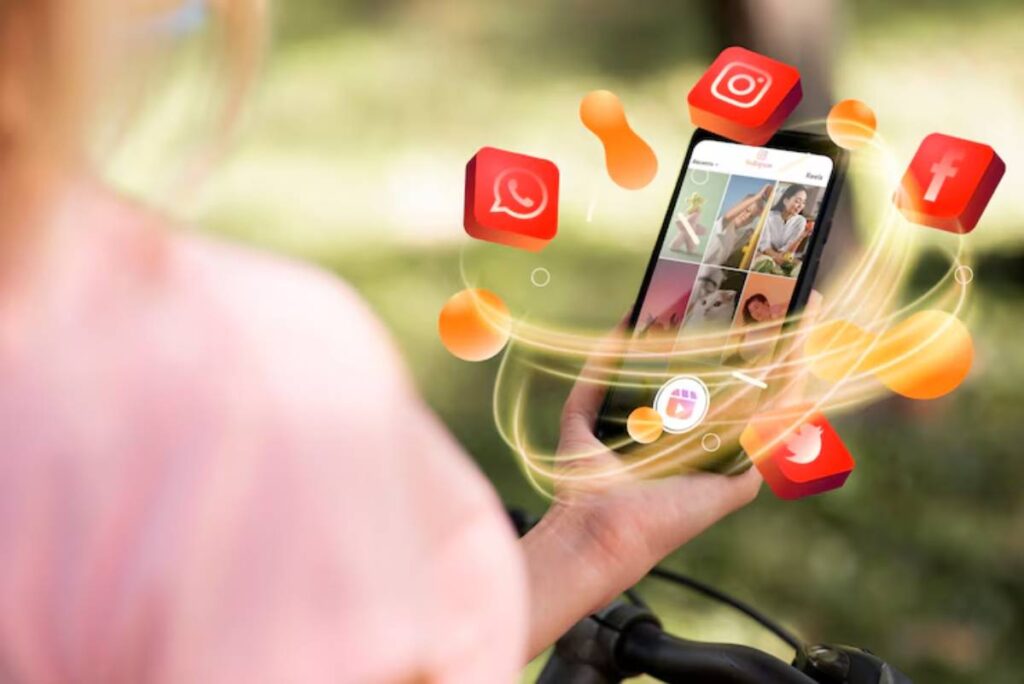The Personal Development Blog

Social Media Fasts: Benefits and How to Start
You check your phone, scroll through Instagram, flick past a few stories, glance at headlines, maybe tap a like or two — and suddenly, an hour’s gone. You’re not sure what you’ve learned, or even what you’ve seen. You feel… overstimulated. But also a little bored.
It’s a strange paradox that’s become all too normal: we’re constantly connected, yet often mentally disconnected from ourselves.
That’s where a social media fast comes in. Think of it as a reset — a conscious step back to recalibrate your relationship with digital platforms. Not a punishment or a permanent goodbye, but a powerful way to clear the noise and reclaim your focus, peace, and time.
In this guide, we’ll explore the real benefits of a digital fast, share stories from people who’ve done it, and walk you through how to start your own — without stress, guilt, or withdrawal. Because your attention is valuable, and you deserve to spend it wisely.
What Is a Social Media Fast?
A social media fast is a temporary break from platforms like Instagram, Facebook, TikTok, Twitter, and LinkedIn, ranging from a few hours to several weeks.
It’s often done to:
- Regain mental clarity
- Reduce distraction and screen fatigue
- Boost productivity
- Reconnect with offline life
- Improve emotional well-being
Unlike a full digital detox, which might involve stepping away from all technology, a social media fast is focused and flexible. It’s about intentional rest, not restriction.
You get to decide:
- How long it lasts
- Which platforms you avoid
- What you replace scrolling with
Why Try a Digital Fast?
We all know social media can be overwhelming, but the real impact goes deeper than most people realise.
1. Mental Clarity
Social feeds flood your brain with content — funny, tragic, political, promotional — often in a single scroll. This constant influx fragments your attention and leaves your mind overstimulated.
A digital fast clears the clutter and lets your thoughts settle.
2. Better Mood and Emotional Balance
Numerous studies link heavy social media use with increased rates of anxiety, depression, and loneliness. The cycle of comparison, outrage, and endless consumption can make you feel emotionally burned out.
Stepping away, even briefly, gives your nervous system a chance to reset.
3. Improved Focus and Productivity
Social media thrives on interruption. Every notification, ping, or dopamine-triggering update trains your brain to switch tasks rapidly.
A break from this loop helps you concentrate longer and complete work with less mental drag. It’s one of the simplest forms of a productivity break that actually works.
4. More Meaningful Relationships
Ironically, the more we try to stay connected online, the more we miss out on real moments. A fast gives you time to have deeper conversations, phone calls, or even face-to-face time with people who matter.
You may also find you’re less reactive and more present in your relationships.
Real-Life Example: Emily’s 7-Day Reset
Emily, a 31-year-old freelance writer, noticed she was checking Instagram every 15 minutes — often without realising it. “I felt twitchy. Like I had to see what was happening, even if nothing was.”
She decided to try a 7-day fast. She logged out, removed the app from her phone, and journaled how she felt each day.
At first, she felt restless. By day three, she was reading more, sleeping better, and felt more focused. “The silence was uncomfortable at first,” she said, “but then it felt like relief.”
Now, she limits social media to just 30 minutes a day — and says she finally feels in control.
Signs You Might Need a Social Media Fast
You don’t need to be addicted to benefit from a break. But these are some common signals that a mental reset from social media could help:
- You check apps first thing in the morning and last thing at night
- You feel anxious, jealous, or low after scrolling
- You struggle to focus on reading, writing, or work
- You feel like you’re “missing something” when you’re not online
- You find yourself opening social apps without thinking
If two or more of these sound familiar, a fast might be just what your mind needs.
How to Start a Social Media Fast (Without Stress)
Many people avoid taking a break because they think it’ll be too hard, too boring, or too isolating. But with a little structure and self-compassion, it can actually be empowering — and even enjoyable.
1. Set a Timeframe You Can Stick To
Start with something manageable.
That might be:
- 24 hours screen-free
- One weekend without socials
- A 7-day pause from specific apps
- A longer 30-day break with occasional check-ins
You don’t need to disappear forever — just long enough to create distance and perspective.
2. Decide What You’re Avoiding
Be specific. Are you taking a break from all platforms, or just the most distracting ones? Can you use messaging apps? What about YouTube?
Clarity helps reduce temptation and decision fatigue.
3. Tell People If You Need To
Worried someone might think you’re ignoring them? Set an out-of-office-style message or story before you sign off.
Something like:
“Taking a short break from socials to reset. Back in a few days — if you need me, text or email.”
You’re not being dramatic. You’re being deliberate.
4. Plan What You’ll Do Instead
One of the biggest mistakes people make is removing social media… without replacing it. The result? Boredom and quick relapse.
Instead, create a shortlist of replacements:

- Walking or exercising
- Reading
- Journalling
- Working on a hobby or creative project
- Spending time offline with friends or family
Give your brain something rewarding to lean into.
Common Challenges and How to Handle Them
Even a short break can bring up some resistance. Here’s how to handle common speed bumps:
“What if I miss something important?”
You won’t. If it’s urgent, someone will find a way to reach you. Most of what we fear missing online isn’t life-changing — it’s just habitual noise.
“I feel twitchy and bored.”
That’s normal. You’re breaking a pattern. Let yourself be bored — it’s where your real ideas start to surface. Within a few days, your brain will adjust.
“I keep reaching for my phone.”
Delete the apps. Use app blockers. Leave your phone in another room. Create friction, not just willpower.
If you’re already learning how to set time limits without guilt, this is the perfect time to apply those skills.
What Happens After a Social Media Fast?
This is where things get interesting.
After even a short break, most people report:

- Improved sleep quality
- Less reactive mood
- More presence in daily life
- Greater control over when and how they engage online
- A desire to scroll less — and live more
You might also find you want to return to social media in a more mindful way.
That could mean:
- Turning off notifications
- Unfollowing accounts that drain you
- Keeping your apps off your home screen
- Only using platforms during set windows each day
These strategies align closely with curating a purpose-driven social feed, which helps make your digital space lighter and more meaningful.
Real-Life Example: Kevin’s Monthly Mini-Fasts
Kevin, a marketing consultant, takes the last weekend of every month off social media. “It resets my head. I use that time to reflect, plan, and reconnect with offline stuff.”
He says the practice helps him start each new month with clearer intentions — and less noise.
“It’s not about hating social media,” he adds. “It’s about not letting it eat all my attention without asking.”
Final Thoughts: Your Attention Is a Resource, Not a Reflex
You don’t have to quit social media to change your life — but you do have to engage with it more consciously.
A social media fast offers space to breathe, reset, and remember who you are outside the scroll. It gives your mind room to rest, your focus time to return, and your inner voice a chance to be heard.
So, whether it’s 24 hours or 30 days, consider trying a fast. Not as punishment, but as permission to reclaim your time.
Because your energy, presence, and attention are too valuable to be spent on autopilot.









